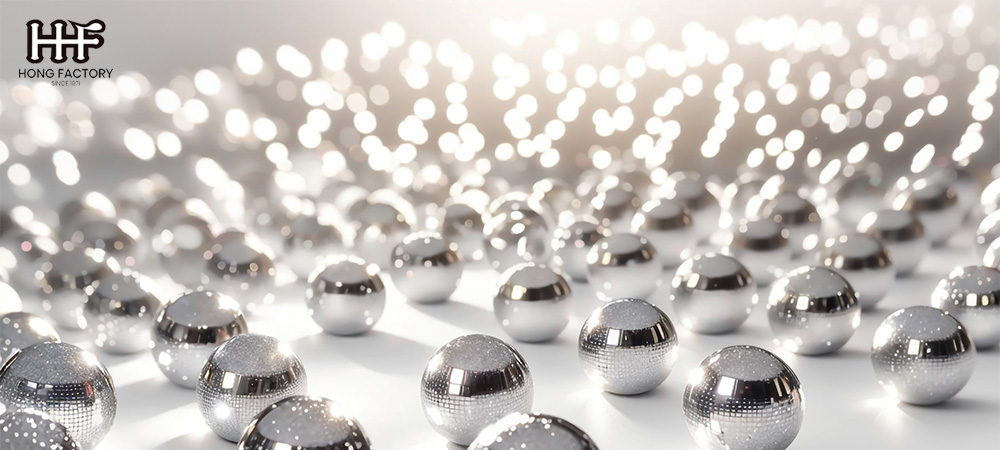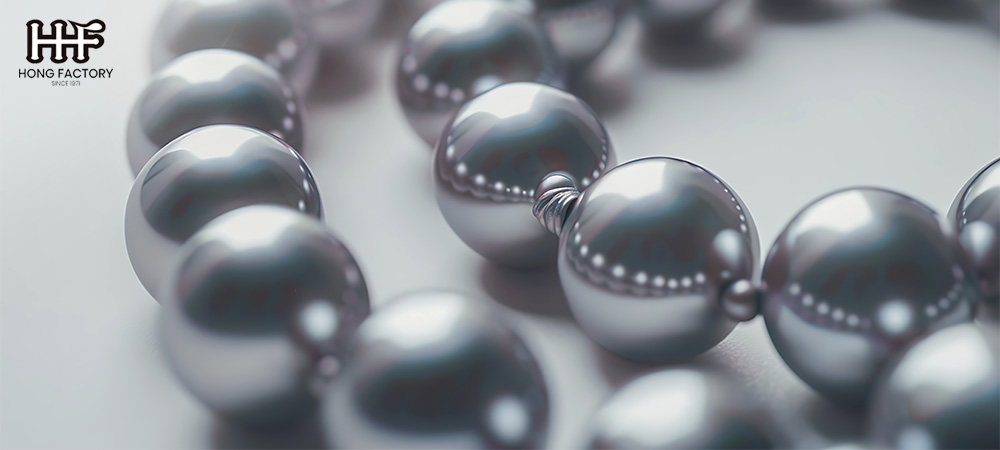Silver beads have been a significant component in various forms of art and jewelry throughout history. Their versatility and aesthetic appeal have made them a popular choice for artisans and jewelers alike. This article explores different aspects of silver beads, including their historical significance, manufacturing techniques, applications in jewelry, cultural implications, and modern trends.
Manufacturing Techniques of Silver Beads
The creation of silver beads involves various techniques that have evolved over time. In ancient times, artisans would employ methods such as casting, forging, and soldering to shape silver into beads. The Maikop culture, for instance, demonstrated advanced skills in crafting silver seed beads, which required precise control and expertise. In modern times, these techniques have been refined with technological advancements, allowing for mass production while maintaining the quality and detail of handmade beads.
Silver Beads in Jewelry
Silver beads are a staple in jewelry making, used in creating necklaces, bracelets, earrings, and more. They can be made from different types of silver, including sterling silver, which is 92.5% pure silver. Beads can vary in size and design, from simple round shapes to intricate patterns, and are often combined with other materials such as gemstones, glass, and enamel to enhance their visual appeal. The versatility of silver beads allows them to complement various styles, from traditional to contemporary.

Cultural Implications of Silver Beads
Throughout history, silver beads have held cultural significance across different societies. In African and indigenous North American cultures, beadwork is a traditional art form that often incorporates silver beads. These beads are used not only for adornment but also as symbols of status, identity, and heritage. In many cultures, silver beads are also believed to have protective and healing properties, adding to their value beyond mere decoration.
Modern Trends in Silver Beads
Today, silver beads continue to be popular in jewelry design, with contemporary trends emphasizing personalization and uniqueness. Brands like Trollbeads offer a wide selection of sterling silver beads that can be used to create customized jewelry pieces. Modern designs often blend traditional craftsmanship with innovative techniques, resulting in beads that are both timeless and trendy. Additionally, the rise of DIY jewelry making has led to an increased demand for silver bead kits, allowing enthusiasts to craft their own unique pieces
Silver Beads in Fashion and Design
Silver beads have transcended their traditional role in jewelry and have become a significant element in fashion and design. Designers often incorporate silver beads into clothing, accessories, and even home decor, adding a touch of elegance and sophistication. The reflective quality of silver beads makes them an attractive choice for embellishing garments, handbags, and shoes, creating eye-catching details that elevate the overall design.
In the fashion industry, silver beads are used to create intricate patterns and textures on fabrics. Designers may use them to accentuate certain areas of a garment, such as collars, cuffs, or hems, or to create an all-over beaded effect. The versatility of silver beads allows them to be paired with various materials, from delicate silks to sturdy leathers, making them a popular choice for both haute couture and ready-to-wear collections.
Silver Beads in Art and Craft
Beyond fashion, silver beads are also widely used in art and craft projects. Artists and crafters appreciate the flexibility and beauty of silver beads, using them to create everything from decorative art pieces to functional items like beaded curtains and lampshades. The ability to manipulate silver beads into different shapes and patterns allows for endless creative possibilities.
In the realm of crafting, silver beads are often used in combination with other materials such as wood, glass, and ceramics. This blending of materials can result in stunning mixed-media artworks that highlight the contrast between silver’s shiny surface and other textures. Whether used in mosaic art, sculptures, or handmade cards, silver beads add a touch of luxury and refinement to any project.

The Economic Impact of Silver Beads
The production and sale of silver beads have a notable economic impact, particularly in regions known for their jewelry-making industries. Countries like India, Thailand, and Mexico are renowned for their skilled artisans who produce high-quality silver beads, contributing significantly to their local economies. The demand for silver beads supports a wide range of businesses, from small-scale artisans to large manufacturing companies.
Moreover, the global trade of silver beads has created a thriving market, with online platforms and trade shows facilitating the exchange of these products worldwide. This accessibility has allowed designers and consumers from different parts of the world to explore and incorporate silver beads into their creations, further driving demand and economic growth.
Environmental Considerations
While silver beads are cherished for their beauty and versatility, it is important to consider the environmental impact of their production. Mining silver can have significant environmental consequences, including habitat destruction and pollution. As a result, there is a growing movement towards sustainable and ethical sourcing of silver.
Some companies are now focusing on using recycled silver to create beads, reducing the need for new mining and minimizing environmental impact. Additionally, initiatives aimed at improving working conditions and ensuring fair wages for artisans are gaining traction, promoting a more ethical and sustainable approach to the production of silver beads.
Silver Beads in Spiritual and Healing Practices
Silver beads have long been associated with spiritual and healing practices in various cultures. Many believe that silver possesses protective and purifying properties, making it a favored material for creating talismans and amulets. Silver beads are often used in prayer beads, such as malas and rosaries, where they serve both a functional and symbolic purpose.
In spiritual practices, silver is thought to enhance the wearer’s connection to the divine and promote inner peace. The reflective nature of silver is believed to mirror the soul, encouraging self-reflection and spiritual growth. Healers and practitioners of alternative medicine sometimes use silver beads in energy work, attributing to them the ability to balance and harmonize the body’s energy fields.
Conclusion
Silver beads continue to captivate and inspire across various domains, from fashion and art to economics and sustainability. Their enduring appeal lies in their ability to adapt to changing trends while maintaining their timeless elegance. As the world becomes more conscious of environmental and ethical considerations, the future of silver beads will likely see a shift towards more sustainable practices, ensuring that these beautiful elements remain a cherished part of our cultural and artistic heritage.

